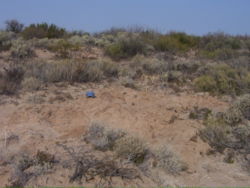IADIZA - GIB ACTIVIDADES Difusion Monte mammals
De Mendoza CONICET
INICIO
GRUPO
Historia
Mision
Objetivos
Gente
ACTIVIDADES
Investigacion
Publicaciones
Cursos
Difusion
RECURSOS
Estacion de campo
Laboratorio
Coleccion Animal
Bioterio
Sitios Web
NOTICIAS
INTERNATIONAL FEDERATION OF MAMMALOGISTS
CONTACTO
THE MAMMALS OF THE MONTE DESERT / MAMIFEROS DEL DESIERTO DEL MONTE
Great part of ecological thought in desert ecology is based on research findings in the northern hemisphere, and these have led to generalizations to other drylands. However, South American aridlands constitute an important scenario of aridland evolution in the Neotropical temperate biota.
The degree of distinctiveness of the South American dryland biota is the result of the history of lineages and place (diverse topography, climates, vegetation) in the southern part of the continent since the Oligocene. The aim of our contribution is to provide an updated review of some aspects of the latest biogeographical, ecological, physiological, and behavioral research of the Monte Desert mammals and reassessment of their evolutionary ecology. The temperate Monte Desert extends from 241 to 431 south latitude and resembles parts of the North American warm deserts. The Monte is a heterogeneous mosaic of landscapes, from open sand dune habitats to Larrea shrublands and dense
vegetation patches of Prosopis woodlands. The mammal assemblages show variations in richness, diversity and endemicity. The structure of mammal assemblages is closely related to vegetation structure over different spatial scales. The Monte mammal assemblages show a great diversity of niche types and ecological, physiological and behavioral attributes for desert existence, convergent, in greater or lesser degree, with ecological counterparts from other deserts of the world. We point out the need to be cautious when comparing heterogeneous arid ecosystems ( Ricardo Ojeda y Solana Tabeni, The Monte mammals revisited, Journal of Arid Environments, 2009).


